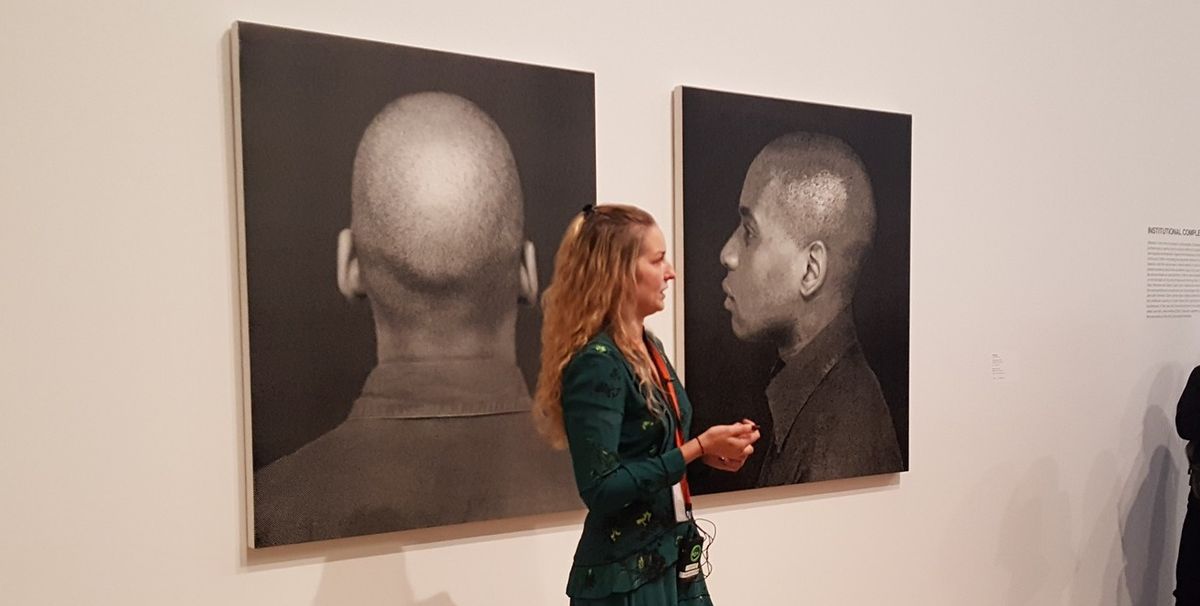Like many museums in New York City and all across the United US, the Whitney Museum of American art offered programming on 20 January, during the inauguration of Donald Trump as the country’s 45th president, to explore what it means to be a citizen and an American after such a divisive election cycle. This includes “My America”, a 45-minute tour, given six times throughout the day, in the Whitney’s major permanent collection show Human Interest: Portraits from the Whitney’s Collection (until 2 April). The tour is a look at “how we deal with the vexing term of identity”, says the Whitney Teaching fellow Erica Cooke, who led the 1pm tour, a programme she spent two months developing with another teaching fellow, Meredith Mowder.
Early on in the tour, Cooke reminds the visitors that the museum’s founder, Gertrude Vanderbilt Whitney, had a broad definition of what an “American artist” was, which included, for instance, she considered artists who had lived and worked in the United States for a period of their life to be American.
The tour is not a presentation of the show—which is spread on two floors, and features over 200 works—but a focussed discussion of works by the artists Arshile Gorky, Grace Hartigan, George Tooker, Anthony Hernandez, Kerry James Marshall, John Sonsini, Shirin Neshat, Njideka Akunyili Crosby, Josh Kline and Glenn Ligon. The works were chosen with the intent of including “the widest spectrum” of identity, Cooke says, and bring up issues of race, class, gender and sexual identity.
Portraiture is “a non-democratic genre, historically speaking”, Cooke points out, and many of the works—such as Sonsini’s painting Byron and Ramiro (2008), of two immigrant labourers in California—give visibility to people who are often overlooked, or absent from art the art historical canon.
The theme of immigration comes up multiple times, starting with the first work in the tour, The Artist and His Mother (1926-36) by Arshile Gorky, who was an Armenian-American immigrant who survived a death march in the Armenian genocide. Gorky painted the work from a photograph of him and his mother over a period of ten years, and the work demonstrates a “sterile distance of the past”, not nostalgia, Cooke says, such as the faces that resemble death masks.
Cooke ends the tour by quoting a recent statement from the feminist activist Gloria Steinem: “Our Constitution does not begin with ‘I, the President.’ It begins with, ‘We, the People.’”


